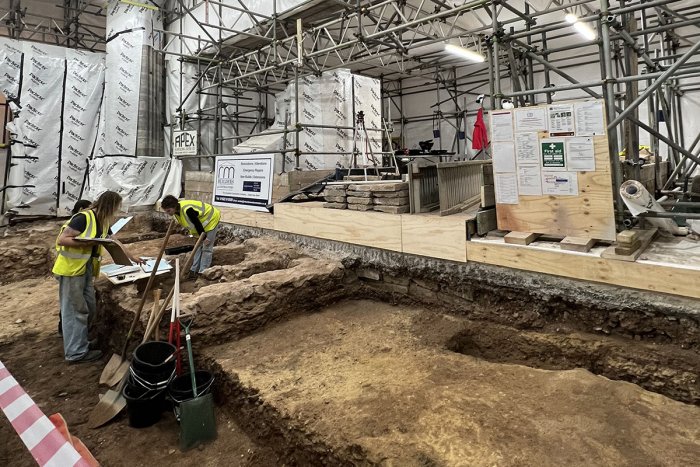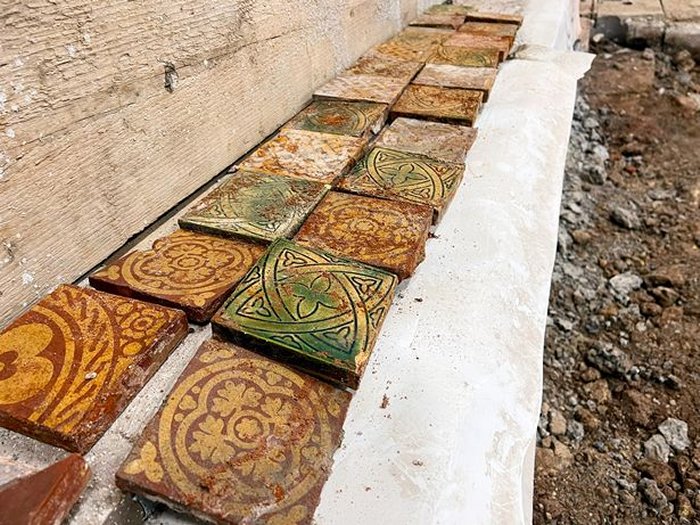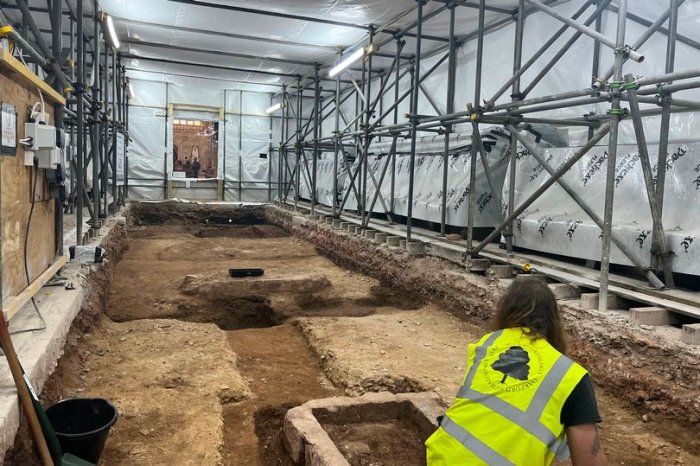Jan Bartek – AncientPages.com – Archaeologists excavating in Exeter, UK, have made several intriguing finds this season. For the first time in 150 years, scientists have the opportunity to conduct archaeological excavations in the Quire area of the 900-year-old Exeter Cathedral. The work has already been hailed a success, and scientists report they have uncovered the ancient tomb of 12th-century Bishop William Warelwast, who was a nephew of William the Conquerer.

New archaeological discoveries at Exeter Cathedral. Credit: Exeter Cathedral
As previously discussed on Ancient Pages, “Wilhelm I Conqueror, also known as “William the Bastard” (ca. 1028 -1087), was King of England and Duke of Normandy. William was the son of Herleva and Robert I, the Duke of Normandy, France, then known as “Francia”). William was frequently called a bastard, especially by his opponents. The reason was that his mother actually never married his father, Robert, most probably because Herleva was a simple Anglo-Saxon woman and not of noble birth.”
The nephew of William the Conquerer, William Warelwast, was a Medieval Norman cleric and Bishop of Exeter in England. Warelwast was a native of Normandy, but little is known about his background before 1087, when he appeared as a royal clerk for King William II of England.
Before becoming blind in 1120, he began the construction of a new cathedral at Exeter. Following his death in 1137 was succeeded by his nephew, Robert Warelwast.
Scientists have now unearthed a crypt and stone-lined tombs at the Exeter Cathedral, and one of the tombs belongs to the nephew of William the Conquerer.

Victorian tiles discovered at Exeter Cathedral. Credit: Exeter Cathedral
“Experts at the site say they are now certain they have uncovered the foundations of the cathedral’s original high altar, which would have featured in the original building of Exeter Cathedral in the early 12th century.
Beyond the Norman high altar, a sunken area has been revealed, which archaeologists now believe indicates a crypt beneath the building. Thought to have been filled in around 1300AD, this new discovery changes our understanding of the original Norman building, which was thought to have been built without a crypt.

A crypt and stone-lined tombs are among the exciting finds archaeologists have uncovered at Exeter Cathedral. Credit: Exeter Cathedral
We have also found, cutting into the backfill, a pair of empty tombs to which we think bishops Robert Warelwast (nephew of the founding bishop William Warelwast, died c.1155) and William Brewer (who died in 1244) were translated in 1320, from their original burial places in the Norman Quire. This is surely the most exciting archaeological discovery ever made at Exeter Cathedral,” a press statement informed.
See also: More Archaeology News
The discoveries come as the archaeological investigation period draws to a close. Next week, specialist contractors will continue work in the area, to complete essential building conservation, reduce the Cathedral’s carbon footprint with a more efficient underfloor heating system, and lay a new ‘Jubilee Floor’ tile design using locally-sourced Devon stone.
Written by Jan Bartek – AncientPages.com Staff





